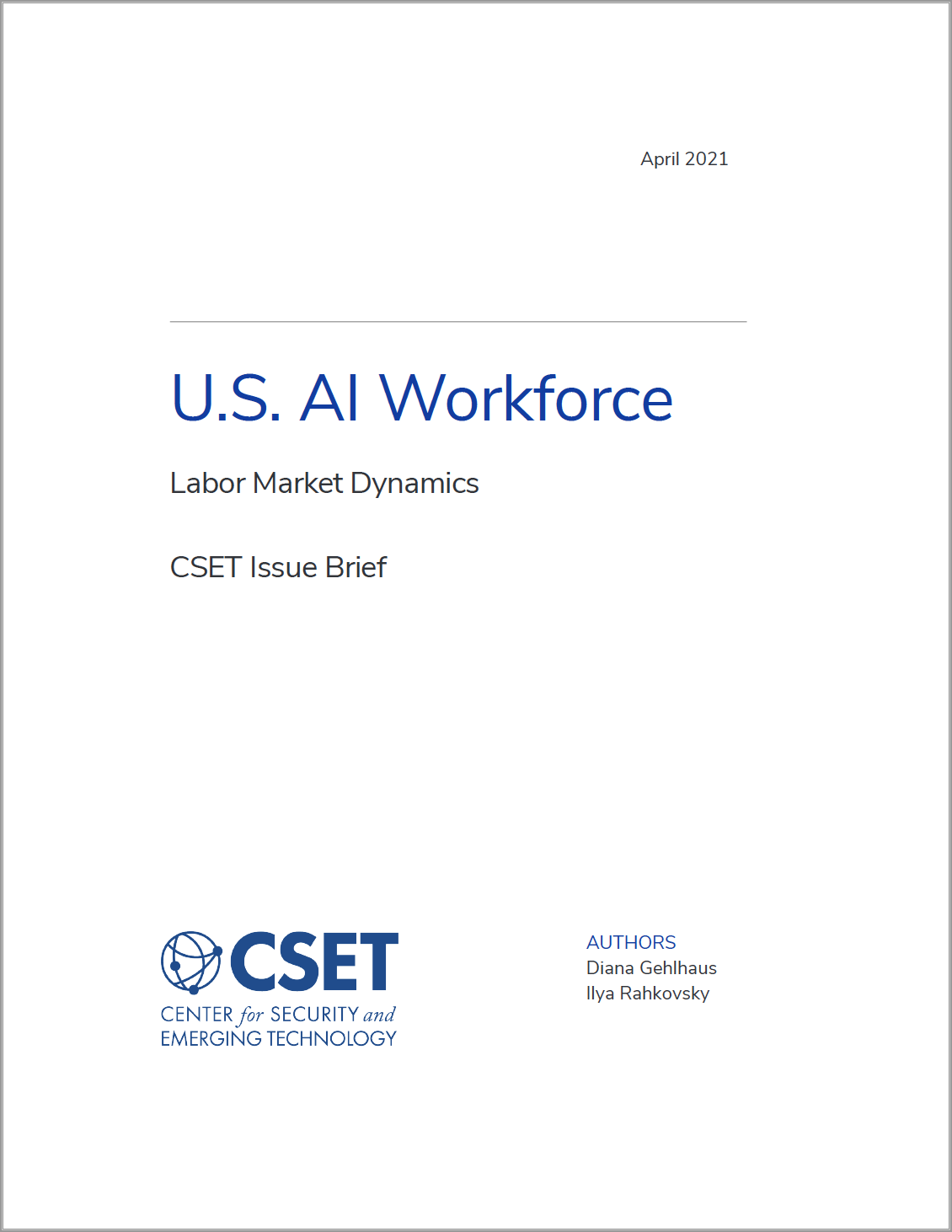Executive Summary
A lack of good data on the U.S. artificial intelligence workforce limits the potential effectiveness of policies targeted at growing and cultivating this cadre of talent. We bridge this information gap by providing new analysis on the state of the U.S. AI workforce.
Our analysis on the dynamics of the U.S. AI workforce finds:
- The AI workforce is geographically concentrated.
- The AI workforce, about 9 percent of total U.S. employed in 2019, has grown rapidly over 2015 to 2019 with technical occupations growing the fastest.
- Growth in demand for AI workers over 2015 to 2019 matches growth in demand for all U.S. workers.
- Key AI occupations have divergent labor market trends.
- There is evidence of strong future growth in demand for AI workers and AI-related skills.
- More efforts are needed to elevate the legitimacy of alternative pathways into AI occupations outside of a four-year degree.
Our analysis also provides new insight on the ongoing concern over talent shortages in the AI workforce. While we do not directly state the presence of shortages, our findings suggest some segments of the AI workforce have a greater likelihood than others to be experiencing a supply-demand gap. Considering the core roles and responsibilities of those working in the design, development, implementation, and scaling of AI and AI-enabled capabilities:
- The extremely strong employment and wage growth for computer and information research scientists over 2015 to 2019 likely indicates that there is more demand than supply.
- In other “high-demand” occupations such as software developers and data scientists, we find evidence that existing talent development pipelines are working to meet demand.
- In the case of project management specialists and user experience designers, we do not find evidence of a notable gap in demand relative to supply.
This is the second paper in a three-part series. The first paper defined the U.S. AI workforce and characterized the supply of AI talent in the United States. The third paper will assess what federal, state, and local government policy levers are available to facilitate a sufficient domestic AI workforce pipeline.
